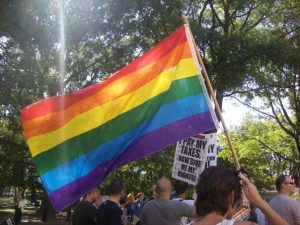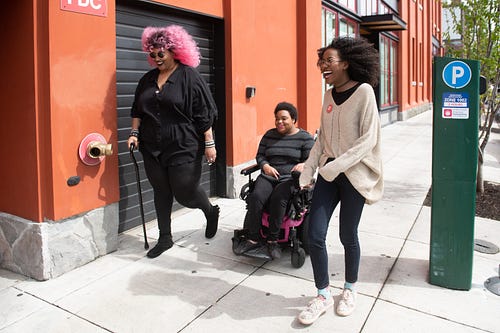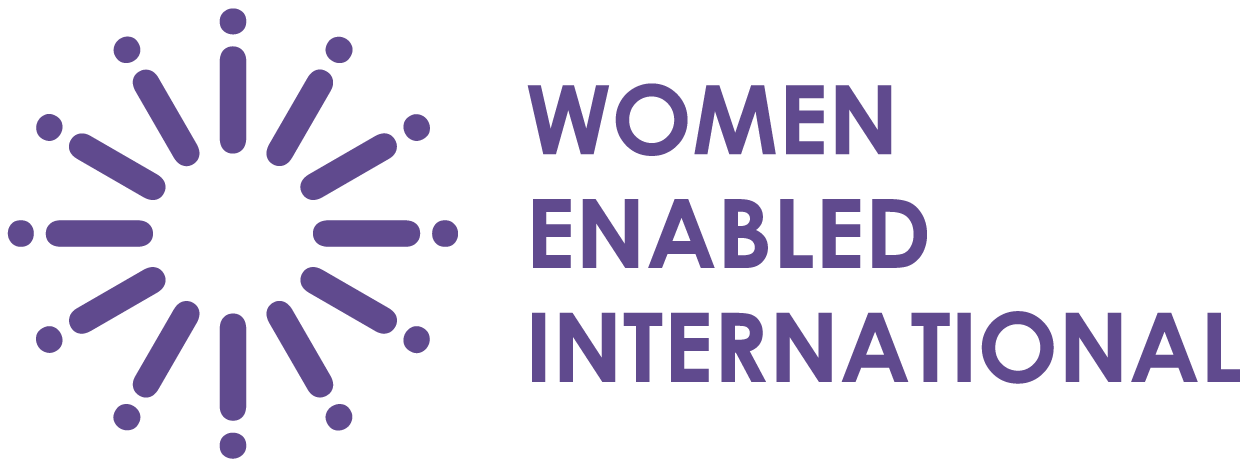First published on Medium.
By Brittany J. Evans
Pride months are about honoring the intentionally silenced stories from our past, reaching out to check in and celebrate with our communities, and digging deeper into our activism and organizing for a better future — one where we can all be proud.

As someone holding the legacies of many identities — Queerness and disability included — , Pride months can feel both like warranted, inspiring declarations of progress and like hollow gestures from our corporate overlords meant to quell our hunger for equality. (I mean, we got a whole month for each, right?).
“Both/and” is my hymn, and while I do recognize the existence of those empty gestures and marketing ploys, I think it’s important to explore Pride, what it takes for our communities to feel proud, and the role these months can play in helping us rebuild a world that is more diverse, more just, and more inclusive of us all. Here are five ways you can honor Queer and Disability Pride:
1. Diversify Your Feed

Make it a practice to include a plurality of voices in the content you consume. Follow a diversity of creators, organizations, models, even meme accounts year-round — not just during their government-given month of pride. Our communities are growing and flourishing on social media. They’ll brighten up your feed!
Here are a few of my favorites: Disabled Hikers, Queering Disability, Dandy Doodlez, The Body is Not an Apology, Black Disability Collective, Dr. Ayesha Khan, and Seeding Sovereignty.
2. Uncover Once Hidden History
It’s during Pride when I listen the hardest for the echoes and lessons of our disabled and queer ancestors by intentionally seeking the parts of our past that were excluded from history books. Podcasts, documentaries, and, honestly, social media are all places where I’ve learned more about historical queer and disabled figures than in any classroom.

Learning about the history of the movements puts my life and work into context, connects me to a story spanning volumes beyond my pages, and makes me feel less alone.
Reach into the past with these resources:
- On the Ancestral Plane: Crip Hand Me Downs and the Legacy of Our Movements by Stacey Park Milbern
- Crip Camp documentary on Netflix.
- Disfigured: On Fairy Tales, Disability, and Making Space by Amanda Leduc
- Disclosure documentary on Netflix.
- Tan France’s Queer Icons podcast on Audible. You’ll hear a familiar name. I was interviewed for the second episode covering the life and legacy of trans disabled activist, Bobbie Lea Bennett!
History remains present. From achieving true marriage equality and ending police violence to confronting employment discrimination and conservatorships (#FreeBritney), there is still a long way to go at the intersection of gender and disability.
3. Make Space for Uncomfortable, Ongoing Reflection and Unlearning
We are tender beings with fragile egos wrapped in layers of indoctrination. In many cultures, disability and queerness have been synonymous with shame for centuries. Even still, identifying as disabled or queer can be life-threatening. We can’t expect to renounce that inheritance and unwrap liberation overnight. Unlearning is messy, painful, and transformative. Yet, we must make space for discomfort in ourselves and in our communities.
Join a book club, talk to your friends, ask deep questions on first dates, share reflection questions, resources, and opportunities with your circle. You will make mistakes. We all do. Share your stories of learning. Leave the door open for others to share theirs. Bask in the discomfort together.
Ask yourself hard questions about gender, disability, and sexuality. What does it mean to be disabled? To be queer? Make reflection a practice. An examined life is a continual process of becoming.
Here are a few of my favorite resources for guided reflection to get started:
- Undrowned: Black Feminist Lessons from Marine Mammals by Alexis Pauline Gumbs
- Octavia’s Brood Starter Guide
- Sisters of Frida’s Reading List
4. Check-in and Listen
This Pride, I want to intentionally celebrate and honor the act of living. Especially after the past year with COVID-19, I’m using these two months not to dance in the street with rainbow flags leaving glitter on everything I touch, but to check in with those in my community that I may not have had the capacity to talk to over the past year while we were all so focused on merely surviving.
Even through trending hashtags, mentionable news coverage, ticker-tape parades, educational campaigns, and corporate pandering, Pride provides an opportunity to check in with the broader community and hear from voices outside of our immediate echo chamber.

What are the main issues that surfaced this Pride? Who are the current figures leading the movement? Are there local organizations working on these issues? What resources are available to you and your community? What are the ways in which you support each other?
There are already people and organizations out there doing the work. Search online for local mutual aid networks, collectives, and organizations. If you are in the United States, one way is to use Mutual Aid Hub to find community-supported efforts near you.
5. Meet at the Intersections
Globally, people with disabilities represent the largest minority in the world. Disability spans all populations. When safe, embrace pride at your intersections. These interlocking identities are not absent in our daily lives and shouldn’t be absent in our attempts to advance human rights.
Pride is a reminder that you are not in this struggle alone. Meet and work alongside allies at shared intersections. Collaborate, share stories, unlearn together and build community across movements by acknowledging and honoring the both/and of existence.
We know that we are more than a few isolated months of Pride. We are part of a larger story, a broader community, an enduring legacy of survival.
It is precisely that legacy that demands us to go beyond simply acknowledging that we cannot be free unless all of us are free. Our theories must turn into practice. We cannot live in a world void of ableism or queerphobia without also dismantling racism, sexism, xenophobia, classism, sizeism, ageism, and colonialism. And most importantly, commit to working together with other movements to bring down those structures and then reinvent them together, brick by brick, until all of us can be proud, all year round.
About the author:
Brittany J. Evans is an advocate, educator, and current Communications Manager for Women Enabled International.
